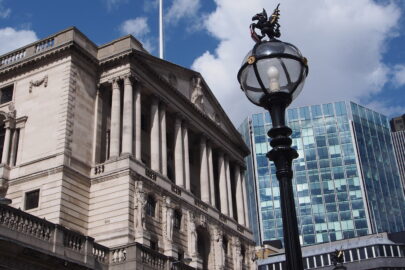The overall value of the residential loan amounts outstanding was £1,272 billion in the second quarter 2015, an increase of 0.8% compared with Q1 2015 and an increase of 1.8% over the past four quarters, the Bank of England and Financial Conduct Authority (FCA) have revealed.
Gross advances of £52.5 billion were recorded in Q2 2015. This was 15.1% higher than Q1 2015 and 1.9% higher compared with Q2 2014. New commitments increased – from £47.2 billion in Q1 2015 to £59.3 billion in Q2 2015. Moreover, this was an increase of 11.0% compared with Q2 2014.
The proportion of gross advances at fixed rates increased from 77.6% in Q1 2015 to 78.9% in Q2 2015.
The overall average interest rate on gross advances decreased by 16bps, from 2.99% in Q1 2015 to 2.83% in Q2 2015. This is the lowest interest rate on gross advances since the series began in 2007.
The value of residential loans advanced to first time buyers increased over the quarter to £10.8 billion from £8.9 billion. The Q2 2014 outturn by comparison was £11.4 billion.
There was an increase in value terms in buy-to-let lending over the past year – from £7.0 billion advanced in Q2 2014 to £8.3 billion in Q2 2015.
The proportion of gross advances at a loan-to-value (LTV) over 90% increased by 0.2 percentage points over the quarter to 3.5% in Q2 2015.
The proportion of gross advances to borrowers with a single income multiple of more than 4.00x increased by 0.2 percentage points to 9.3% in Q2 2015.
The proportion of gross advances that is a combination of an LTV over 90% and loan-to-income multiple of over 3.5x for single income borrowers (or 2.75x for joint income borrowers) increased over the quarter by 0.2 percentage points to 2.3%.
The number of new arrears cases in Q2 2015 was 20,800. This was 5.5% lower than in Q1 2015 and was the lowest since the series began in 2007.
Brian Murphy, head of lending at Mortgage Advice Bureau (MAB), said: “The second quarter of 2015 saw a significant boost in mortgage activity, with both gross advances and new commitments on the up. At the same time, average mortgage rates fell to the lowest level seen since the MLAR series began in 2007. This improved affordability has caused a rush of demand from borrowers, and lenders are locked in fierce competition to win their business.
“Borrowers are increasingly aware that these cut-price rates only have a limited lifespan, particularly as we edge closer to an interest rate rise. As a result, nearly four in five mortgage advances were at a fixed rate in Q2, with growing numbers of borrowers opting for the security of regular mortgage payments and an extended window of paying rock-bottom rates.
“While affordability conditions have never been so good for some, there are still significant barriers for those struggling to save for a house deposit. Only 3.5% of gross advances were above a 90% loan-to-value (LTV) in Q2. With house prices continuing to rise, improved availability of higher LTV products is sorely needed. Otherwise, lower income borrowers face being barred from the property ladder altogether because of unrealistic deposit requirements.”
